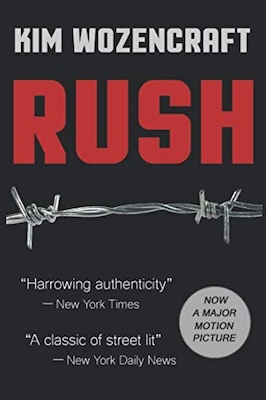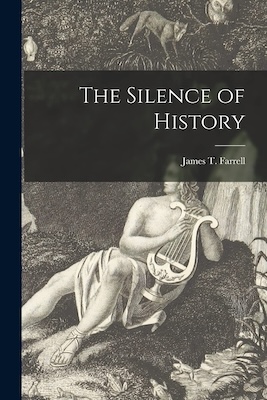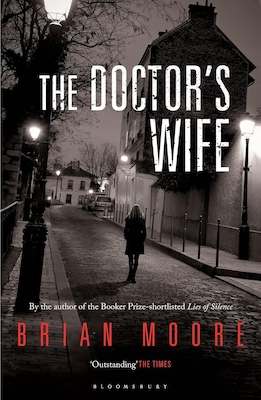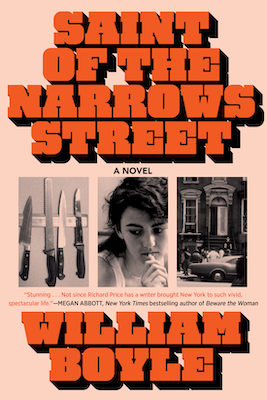9 Haunting Books About Catholicism
I was raised Catholic. I became an atheist at eighteen and then had a period of devoutness that spanned my mid-twenties to my early thirties. I lost faith again in a much bigger and more substantial way when my son was born. I turned away from religion and didn’t look back. Except when I did. My work is imbued with Catholic imagery and symbolism. My characters are, for the most part, practicing Catholics or at least culturally Catholic. I have called myself many things over the years—a Catholic atheist, Catholic-haunted, a non-conforming Catholic, a cultural Catholic, wayward, lapsed, an agnostic who accepts mystery—but one thing’s always true: Catholicism, whether I like it or not, is at the root of everything I am and do. The shame and guilt and fear and paranoia come from there. A lot of the bullshit. But some good stuff, too. So many favorite writers, filmmakers, and musicians of mine are Catholic or shaped by Catholicism, and art’s where I’ve always felt the deepest sense of connection to faith.
My new novel, Saint of the Narrows Street, is set on a fictional block in the southern Brooklyn neighborhood of Gravesend, where I was born and raised. The action of the book spans the years 1986-2004. My subject isn’t Catholicism itself. There are no scenes set in a church, and there’s no Catholic message, but the atmosphere is imbued with the working-class Italian American Catholic aesthetic of the world I grew up in. The characters—some of whom have lost their faith, others who are losing it—have had their identities shaped by their Catholic upbringings. Years of parochial school. Mass every Saturday night. Crumbling statues of saints or Mary or Jesus in grottoes in front yards. Crucifixes on walls. Go-to rosary beads in pockets. Prayers, prayers, prayers. Codes of morality. Risa Franzone, the main character, is pushed to the limit by her bad seed husband, Sav, in the opening chapter, and she spends the rest of the book struggling with a decision she’s been forced to make. Risa’s reckoning is rooted in and challenged by her faith, which is ultimately disrupted by the action she’s taken against Sav and deteriorates across many years.
The list I’ve made here collects books that interact with Catholicism in much the same way, as a powerful force that hangs over everything in the worlds of these characters and authors. Books like these can feel simultaneously like acts of penance and reverence and blasphemy. It is, by no means, an exhaustive list. Not included are significant Catholic writers–Flannery O’Connor, Graham Greene, and Walker Percy jump to mind–that also had a major impact on me. Instead, I chose to focus on nine books that feel haunted–in varying degrees–by the trembling ghost of Catholicism. Even as the characters yearn for escape or different lives, they’re tethered to the sweltering Catholic atmospheres of their youth and young adulthood.
About Yvonne by Donna Masini
About Yvonne is a great book about being in your own head too much in a way that’s informed by being an Italian American recovering Catholic from Brooklyn. The setup is simple: Terry Spera, an adjunct and poet who is married to a Soho art dealer, Mark, begins to suspect that Mark is having an affair with a client of his, Yvonne. Terry begins stalking Yvonne, breaking into her apartment while she’s gone, befriending her at the gym. The plot revolves around Terry’s obsession with Yvonne, and everything she does is filtered through the Catholicism of her youth, which she abandoned many years before. Terry, like so many Catholics, is big on suffering and the sacramental and has “a special relationship to guilt.” She has a nostalgia for believing in things and is easily “seduced by the idea of the holy.” We also get this choice observation from her early on: “Asking a Catholic to ignore God is like telling a thief you left your door unlocked.”

The Boys of Bensonhurst by Salvatore La Puma
There aren’t a ton of writers or books out there that tackle my part of southern Brooklyn. I can’t quite remember how I first discovered Salvatore La Puma’s award-winning 1987 story collection, The Boys of Bensonhurst. Did I stumble across it at a library bag sale or somewhere online? I feel certain no one told me about it, that I chanced upon it myself. In any case, it’s become something of a lodestar for me, and it remains, sadly, very neglected. The stories are set in prewar Brooklyn and capture the Italian American experience of my grandparents’ generation with verve. The characters are torn apart by the church and the mob. They are haunted by ghosts and trapped by the neighborhood. It’s an essential book that deserves to be rediscovered. La Puma went on to write a very good novel, A Time for Wedding Cake, and one more story collection, Teaching Angels to Fly, which are also well worth tracking down and deal with similar themes.
Wait Until Spring, Bandini by John Fante
While it’s his second novel, Ask the Dust, one of the great Los Angeles books, that he’s most remembered for these days, it’s Wait Until Spring, Bandini—set in Colorado (where Fante’s family immigrated) during the Great Depression—that really captures the essence of Italian American family life. The yearnings and desires of young Arturo Bandini. The struggles of his father. The solemn piety of his mother. And, above all, there’s that voice—a rocket of bitterness and sweetness, of rage and craving.

Rush by Kim Wozencraft
I first read the book after seeing Lili Fini Zanuck’s 1991 adaptation starring Jennifer Jason Leigh and Jason Patric. Based on Wozencraft’s own experiences, it’s the story of Kristen Cates, “a nice Catholic girl who becomes an undercover narcotics officer and a junkie.” At the beginning of the book, as Kristen gets ready to face the Parole Commission, she thinks about leveraging her goody-goody Catholic background for some goodwill. The book is subsumed with an atmosphere derived from Kristen’s Catholic-shaped perceptions of the world. That strain is all but nonexistent in the film adaptation, but you can still feel it somehow. The pressure. The guilt. In an interview with Jill Eisenstadt for BOMB in 1992, discussing her initial naïve belief that drugs themselves are evil, Wozencraft said, “I grew up in a very conservative, traditional household, and I was a good Catholic girl. They teach you never to question authority. I didn’t question authority, and I bought the hype.”
Small Mercies by Dennis Lehane
Dennis Lehane’s Small Mercies is the only book from this century I’ve included here, but it’s set in 1974 during the Boston busing crisis. Lehane is a master at building the sort of atmosphere I’m describing. A tight-knit world of secrets and lies where a certain morality is preached and betrayed. To see an examination of racism framed through the lens of the stifling Irish American Catholic world of Southie is wrenching. Mary Pat Fennessy is one of the great characters in recent fiction.
Thérèse Desqueyroux by François Mauriac, translated by Raymond N. MacKenzie
When we meet the titular character, Thérèse, she has been let off after being tried in court for the attempted murder of her husband. There was plenty of evidence that she did in fact poison him using arsenic, but her husband testified on her behalf to avoid scandal. Thérèse’s reflections on all that’s led her to where she is—the stifling existence of a Catholic landowner’s wife, the pressures of a loveless marriage and of motherhood—carry the weight of a life shaped by guilt and spiritual starvation. After her release, she’s essentially imprisoned by her husband at his family estate, shut off from the world, trying to avoid further scandal. She only desires freedom.

The Silence of History by James T. Farrell
Through the guise of working-class Chicago kid Eddie Ryan, we get a somewhat traditional coming-of-age book steeped in interiority. Ryan is working and going to college and thinking about All the Big Things. We slip into the POVs of other people in his life and learn their stories. Eddie struggles consistently with faith and finds himself drifting away from the people he was raised around, searching, yearning, feeling lost. He thinks a lot about history and its impact on him in his present moment. The novel is set over a hundred years ago in the 1920s and was written over sixty years ago, but it feels startlingly contemporary. Somewhere near the middle of the book, we get this from Eddie: “It was hard, damn hard, too damn hard to be a Catholic, and he found himself wishing, as he had often wished in boyhood days when he’d been tormented by the fear of having made a bad confession, that he weren’t a Catholic.”
Looking for Mr. Goodbar by Judith Rossner
The strict Catholic upbringing of main character Terry Dunn informs her downfall. A young schoolteacher from a large Catholic family that prizes obedience, Terry begins to drift into a secret life of illicit one-night stands with strangers, walking the razor-sharp edge of freedom, culminating in her murder on New Year’s Eve. While her self-destructive behavior is mystifying to some readers, it makes perfect sense when considering the psychological and emotional damage inflicted on her by the men in her life. Innocence gives way to emptiness. She lives in the shadows of the visions of sin she’s been sold. Richard Brooks’s 1977 adaptation, starring Diane Keaton as Terry, is excellent and has just received a stunning 4K UHD/Blu-ray release from Vinegar Syndrome.

The Doctor’s Wife by Brian Moore
The main character, Sheila Redden from Belfast, is in Paris when the book opens. She’s visiting with a friend for a few days before heading to the south of France, where her husband, a doctor back in Belfast, will join her on holiday. They’ll stay in the same hotel they honeymooned in years prior. But then Sheila meets a young American named Tom, and things go off course. She falls for Tom quickly, and he follows her south. When her husband’s trip is delayed by work, they have more time together. Sheila is a woman who has lost faith and yet maintains a sense of morality shaped by the church. As the possibility of a new life opens to her, other things crumble. While it was marketed as a steamy book about an affair, it’s much more about Sheila’s doubt and resilience. Late in the book, Sheila talks to a priest at Notre-Dame, and he asks, “Madame, are you a Catholic?” Sheila’s response: “I was. I don’t think I am anymore.” A knowing answer, trembling with both regret and pride.
The post 9 Haunting Books About Catholicism appeared first on Electric Literature.
